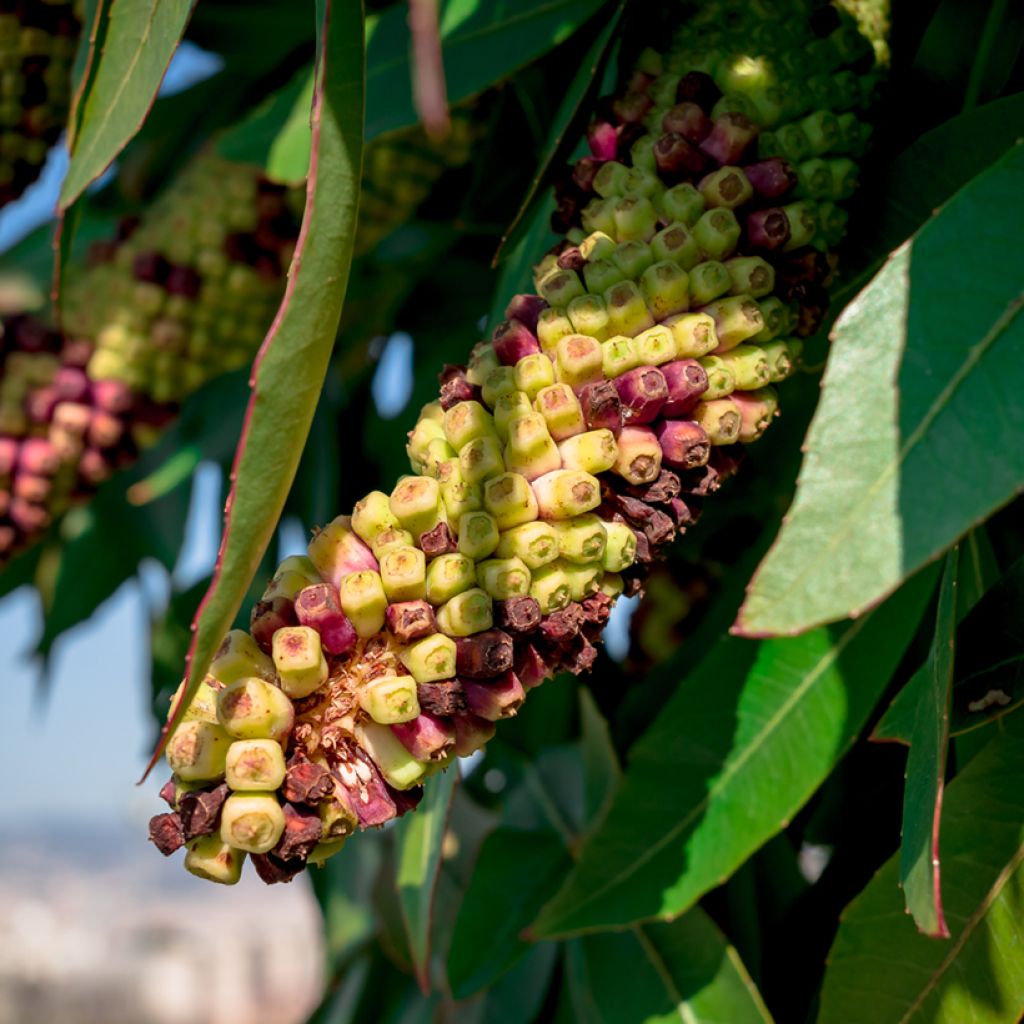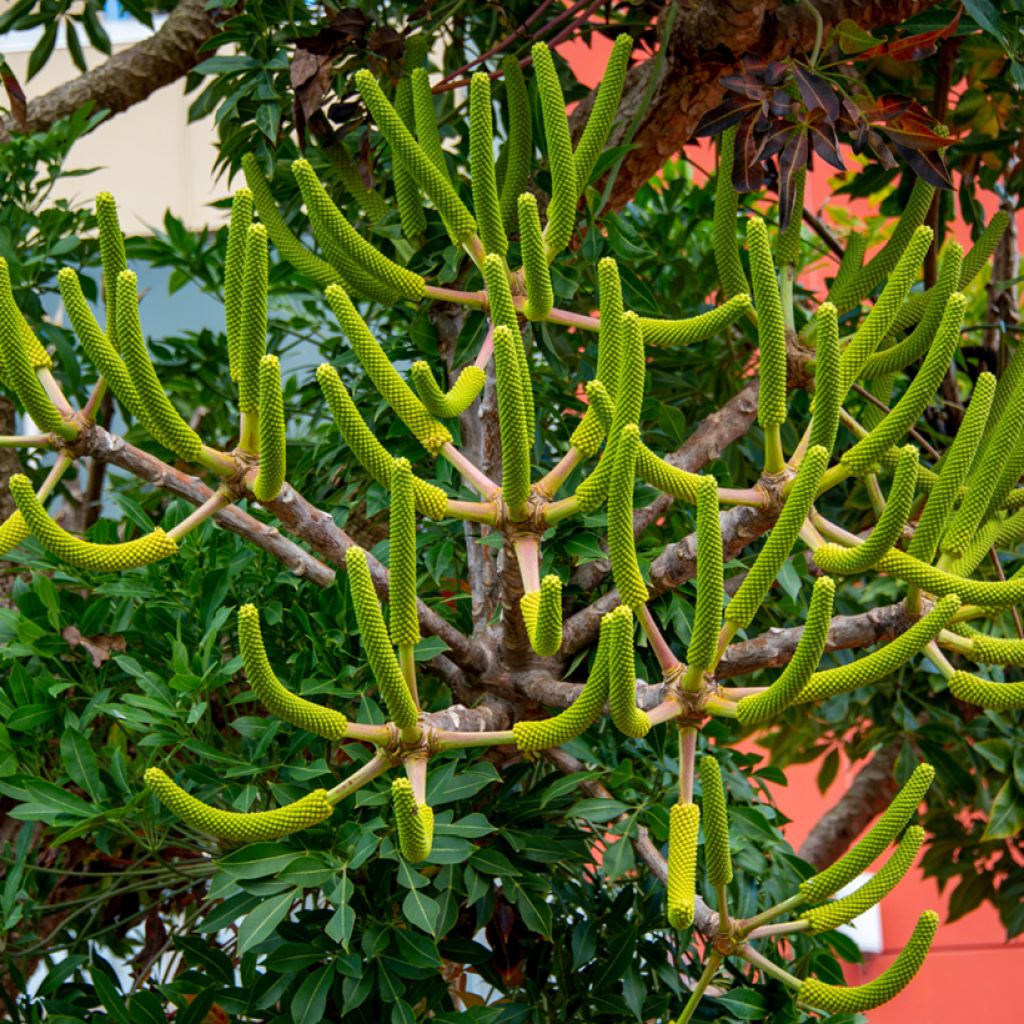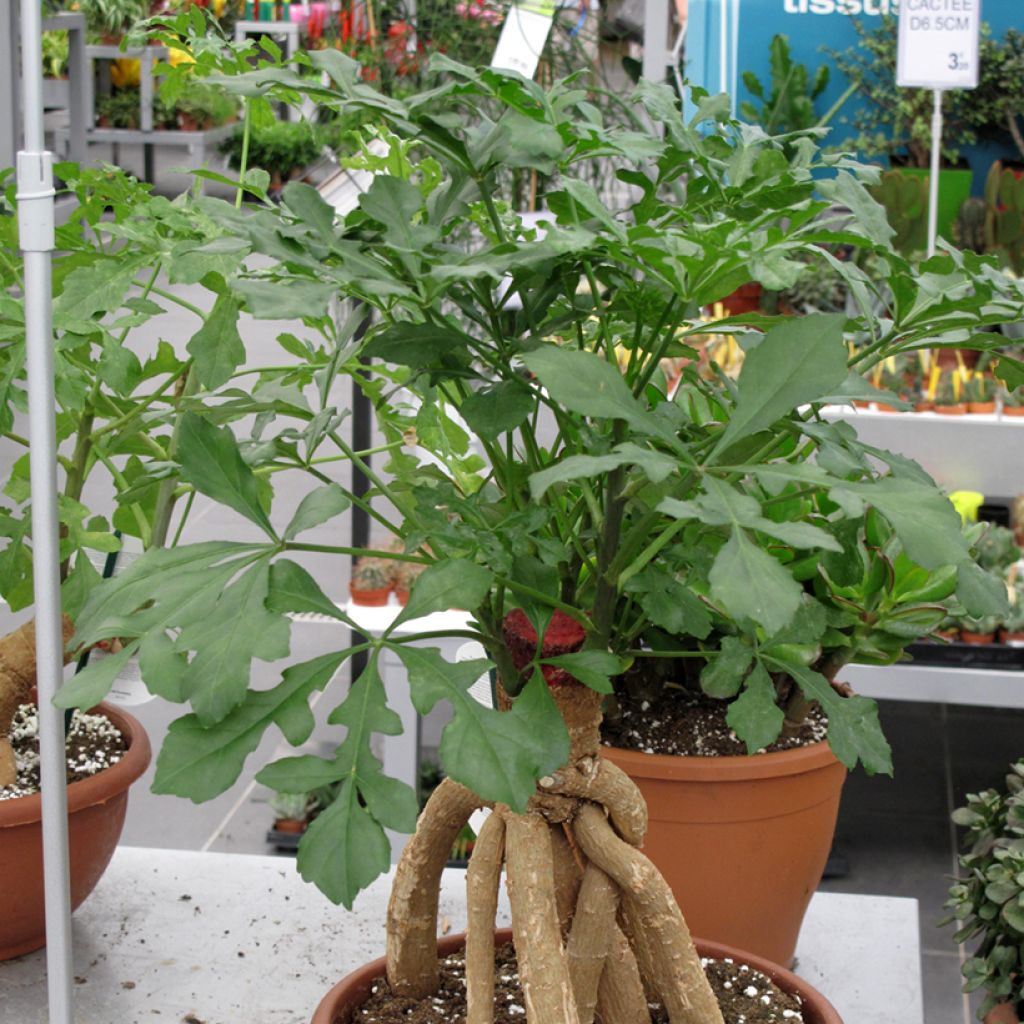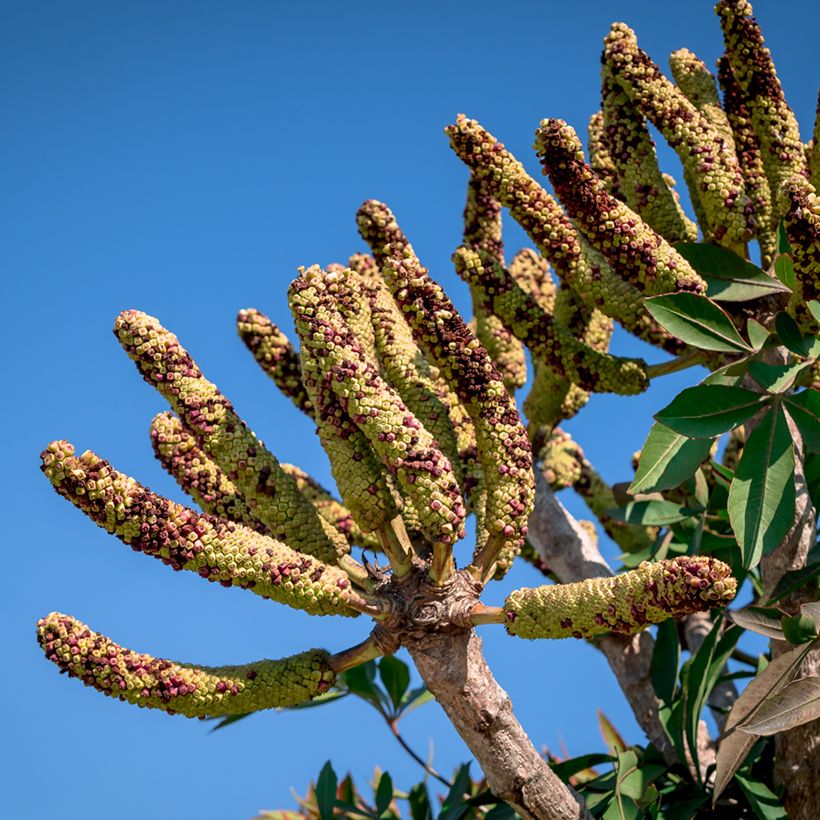

Cussonia spicata - Cabbage Tree


Cussonia spicata - Cabbage Tree


Cussonia spicata - Cabbage Tree


Cussonia spicata - Cabbage Tree


Cussonia spicata - Cabbage Tree


Cussonia spicata - Cabbage Tree


Cussonia spicata - Cabbage Tree


Cussonia spicata - Cabbage Tree


Cussonia spicata - Cabbage Tree


Cussonia spicata - Cabbage Tree
Cussonia spicata - Cabbage Tree
Cussonia spicata
Cabbage Tree, Kiepersol
Special offer!
Receive a €20 voucher for any order over €90 (excluding delivery costs, credit notes, and plastic-free options)!
1- Add your favorite plants to your cart.
2- Once you have reached €90, confirm your order (you can even choose the delivery date!).
3- As soon as your order is shipped, you will receive an email containing your voucher code, valid for 3 months (90 days).
Your voucher is unique and can only be used once, for any order with a minimum value of €20, excluding delivery costs.
Can be combined with other current offers, non-divisible and non-refundable.
Home or relay delivery (depending on size and destination)
Schedule delivery date,
and select date in basket
This plant carries a 24 months recovery warranty
More information
We guarantee the quality of our plants for a full growing cycle, and will replace at our expense any plant that fails to recover under normal climatic and planting conditions.
Would this plant suit my garden?
Set up your Plantfit profile →
Description
Cussonia spicata, commonly known as "Cabbage Tree" by English speakers, is a tree native to Southern Africa, unique and ornamental, renowned for its drought resistance. Its silhouette is distinctive, with a swollen trunk and leaves arranged in a parasol at the end of thick branches. With its lush foliage and curious spike-like flowering, it thrives in exotic or Mediterranean gardens, as well as in containers. It is a tender plant that can be grown in the ground in coastal gardens where frosts are rare and mild.
Cussonia spicata belongs to the Araliaceae family, closely related to Aralia elata. This botanical species is native to the dry regions of sub-Saharan Africa, from South Africa to Zimbabwe, where it thrives in savannas and on rocky outcrops. In its natural habitat, it grows into a tree reaching between 10 and 15 m in height. When planted in coastal gardens, it can reach heights of 6 to 10 m with a spread of 3 to 5 m. In containers, the plant remains smaller, typically reaching heights of 2 to 3 m.
Spike Cussonia often develops a swollen trunk at the base, storing water during dry periods. The bark is greyish on young branches, yellowish and deeply fissured on the trunk and older branches. The foliage is evergreen or semi-deciduous depending on the climate. The leaves are clustered at the end of thick branches, forming a dense, rounded crown. These are very large leaves, measuring up to 70 cm in diameter, borne on petioles 40 to 60 cm long. They are glossy, ranging from grey-green to bluish-green. Each palmate leaf consists of 5 to 9 lobes, 20 to 35 cm long, irregularly and deeply incised. The leaflets are 6 to 15 cm long and 4 cm wide, with dentate margins. Youthful foliage has a different appearance, with entire or weakly cut leaves. This plant produces upright cylindrical spike inflorescences, grouped in 8 to 12, resembling candelabras at the end of branches. Each spike, up to 20 cm long, comprises numerous small greenish-yellow flowers with a slightly unpleasant scent. This flowering occurs from spring to autumn depending on the climate, on mature plants. After pollination, small ovoid fruits develop, turning purple to black when ripe, measuring 5 to 6 mm in diameter. They are appreciated by some birds. Cussonia spicata is hardy to around -5 °C once mature and in a dry soil. Its growth is rapid, especially in warm, sunny conditions. Its root system is shallow and highly aggressive; when planting in the ground, it should be placed away from walls, fences, sewer lines, etc.
In favourable climates, Cussonia spicata is perfect for creating a focal point in a dry garden or large rockery due to its unique architectural habit. It adapts well to container culture for decorating terraces and balconies. In winter, it can find refuge in a lightly heated conservatory with Baobabs. In the garden, pair it with Agave americana, Yucca gloriosa, Opuntias and Dasylirions that share similar requirements in terms of soil and exposure.
Report an error about the product description
Cussonia spicata - Cabbage Tree in pictures






Plant habit
Flowering
Foliage
Botanical data
Cussonia
spicata
Araliaceae
Cabbage Tree, Kiepersol
Cussonia quercifolia, Cussonia triptera, Cussonia calophylla, Cussonia kraussii, Cussonia boivinii
South Africa
Other Shrubs
View all →Planting and care
The Cussonia spicata enjoys full sun and well-drained soils. Plant it in a mix of potting soil and coarse sand (or gravel) to improve drainage, especially if your soil is clayey. It tolerates drought well once established, but water regularly during the first year of planting to promote root growth. This tree is hardy down to -5°C at its lowest, so it is important to protect it from the cold during the first few years, especially if frosts are frequent in your area. Apply a thick mulch at the base of the tree to protect the roots from frost. Shelter it from cold winds in cooler areas. Fertilise in spring with a balanced fertiliser (such as 10-10-10) to support its rapid growth.
Pot Culture:
Use a large container with numerous drainage holes. A mix of potting soil, sand, and perlite provides a light and well-draining substrate, essential to avoid excess water that could lead to rotting of the fleshy roots. Place the plant in full sun on a well-exposed terrace or balcony. Water moderately, allowing the soil to dry out between waterings. During the growing season (spring-summer), apply a balanced liquid fertiliser every 4 to 6 weeks. In winter, reduce watering and move the plant to a bright, cool room or conservatory where the temperature does not drop below 0°C. The Cussonia spicata responds well to pruning, which helps control its shape and size in a pot.
The Cussonia spicata does not require frequent pruning, but occasional interventions can help maintain a harmonious shape, especially in a pot. Pruning should be done in winter during the vegetative rest period. Remove dead, diseased, or damaged branches. If the tree becomes too large, particularly in a container, a light trimming of branch tips will help maintain a more compact silhouette. In a pot, this pruning is essential to keep a balanced habit and prevent the plant from becoming too bulky.
Planting period
Intended location
Care
Planting & care advice
This item has not been reviewed yet - be the first to leave a review about it.
Haven't found what you were looking for?
Hardiness is the lowest winter temperature a plant can endure without suffering serious damage or even dying. However, hardiness is affected by location (a sheltered area, such as a patio), protection (winter cover) and soil type (hardiness is improved by well-drained soil).

Photo Sharing Terms & Conditions
In order to encourage gardeners to interact and share their experiences, Promesse de fleurs offers various media enabling content to be uploaded onto its Site - in particular via the ‘Photo sharing’ module.
The User agrees to refrain from:
- Posting any content that is illegal, prejudicial, insulting, racist, inciteful to hatred, revisionist, contrary to public decency, that infringes on privacy or on the privacy rights of third parties, in particular the publicity rights of persons and goods, intellectual property rights, or the right to privacy.
- Submitting content on behalf of a third party;
- Impersonate the identity of a third party and/or publish any personal information about a third party;
In general, the User undertakes to refrain from any unethical behaviour.
All Content (in particular text, comments, files, images, photos, videos, creative works, etc.), which may be subject to property or intellectual property rights, image or other private rights, shall remain the property of the User, subject to the limited rights granted by the terms of the licence granted by Promesse de fleurs as stated below. Users are at liberty to publish or not to publish such Content on the Site, notably via the ‘Photo Sharing’ facility, and accept that this Content shall be made public and freely accessible, notably on the Internet.
Users further acknowledge, undertake to have ,and guarantee that they hold all necessary rights and permissions to publish such material on the Site, in particular with regard to the legislation in force pertaining to any privacy, property, intellectual property, image, or contractual rights, or rights of any other nature. By publishing such Content on the Site, Users acknowledge accepting full liability as publishers of the Content within the meaning of the law, and grant Promesse de fleurs, free of charge, an inclusive, worldwide licence for the said Content for the entire duration of its publication, including all reproduction, representation, up/downloading, displaying, performing, transmission, and storage rights.
Users also grant permission for their name to be linked to the Content and accept that this link may not always be made available.
By engaging in posting material, Users consent to their Content becoming automatically accessible on the Internet, in particular on other sites and/or blogs and/or web pages of the Promesse de fleurs site, including in particular social pages and the Promesse de fleurs catalogue.
Users may secure the removal of entrusted content free of charge by issuing a simple request via our contact form.
The flowering period indicated on our website applies to countries and regions located in USDA zone 8 (France, the United Kingdom, Ireland, the Netherlands, etc.)
It will vary according to where you live:
- In zones 9 to 10 (Italy, Spain, Greece, etc.), flowering will occur about 2 to 4 weeks earlier.
- In zones 6 to 7 (Germany, Poland, Slovenia, and lower mountainous regions), flowering will be delayed by 2 to 3 weeks.
- In zone 5 (Central Europe, Scandinavia), blooming will be delayed by 3 to 5 weeks.
In temperate climates, pruning of spring-flowering shrubs (forsythia, spireas, etc.) should be done just after flowering.
Pruning of summer-flowering shrubs (Indian Lilac, Perovskia, etc.) can be done in winter or spring.
In cold regions as well as with frost-sensitive plants, avoid pruning too early when severe frosts may still occur.
The planting period indicated on our website applies to countries and regions located in USDA zone 8 (France, United Kingdom, Ireland, Netherlands).
It will vary according to where you live:
- In Mediterranean zones (Marseille, Madrid, Milan, etc.), autumn and winter are the best planting periods.
- In continental zones (Strasbourg, Munich, Vienna, etc.), delay planting by 2 to 3 weeks in spring and bring it forward by 2 to 4 weeks in autumn.
- In mountainous regions (the Alps, Pyrenees, Carpathians, etc.), it is best to plant in late spring (May-June) or late summer (August-September).
The harvesting period indicated on our website applies to countries and regions in USDA zone 8 (France, England, Ireland, the Netherlands).
In colder areas (Scandinavia, Poland, Austria...) fruit and vegetable harvests are likely to be delayed by 3-4 weeks.
In warmer areas (Italy, Spain, Greece, etc.), harvesting will probably take place earlier, depending on weather conditions.
The sowing periods indicated on our website apply to countries and regions within USDA Zone 8 (France, UK, Ireland, Netherlands).
In colder areas (Scandinavia, Poland, Austria...), delay any outdoor sowing by 3-4 weeks, or sow under glass.
In warmer climes (Italy, Spain, Greece, etc.), bring outdoor sowing forward by a few weeks.


















































